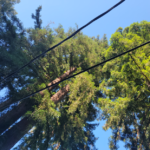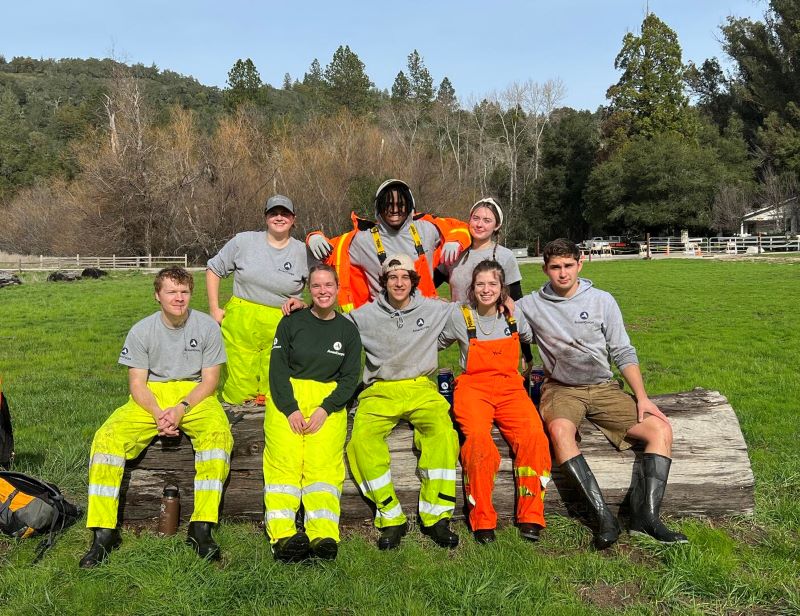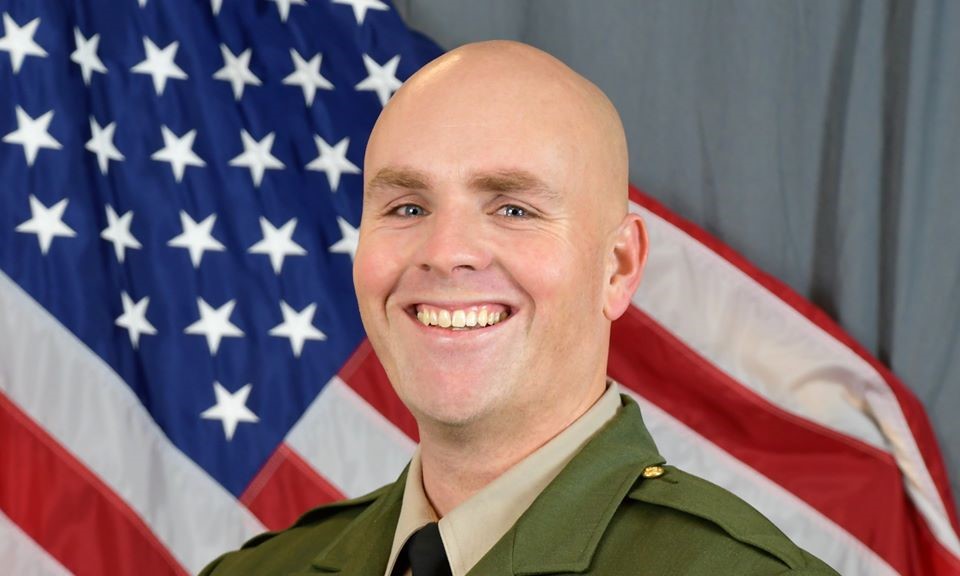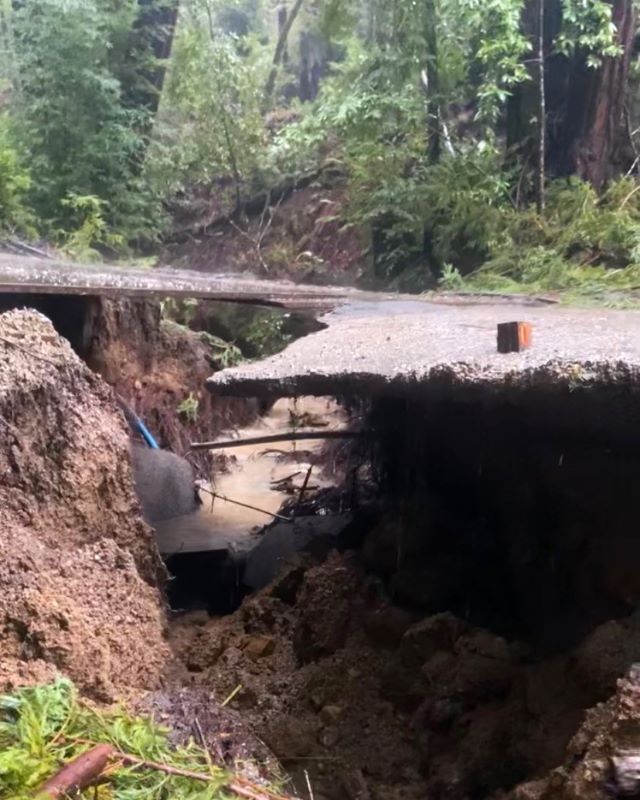
Can You Hear Me Now? AT&T Moves to Modernize Causing Concern in Rural California
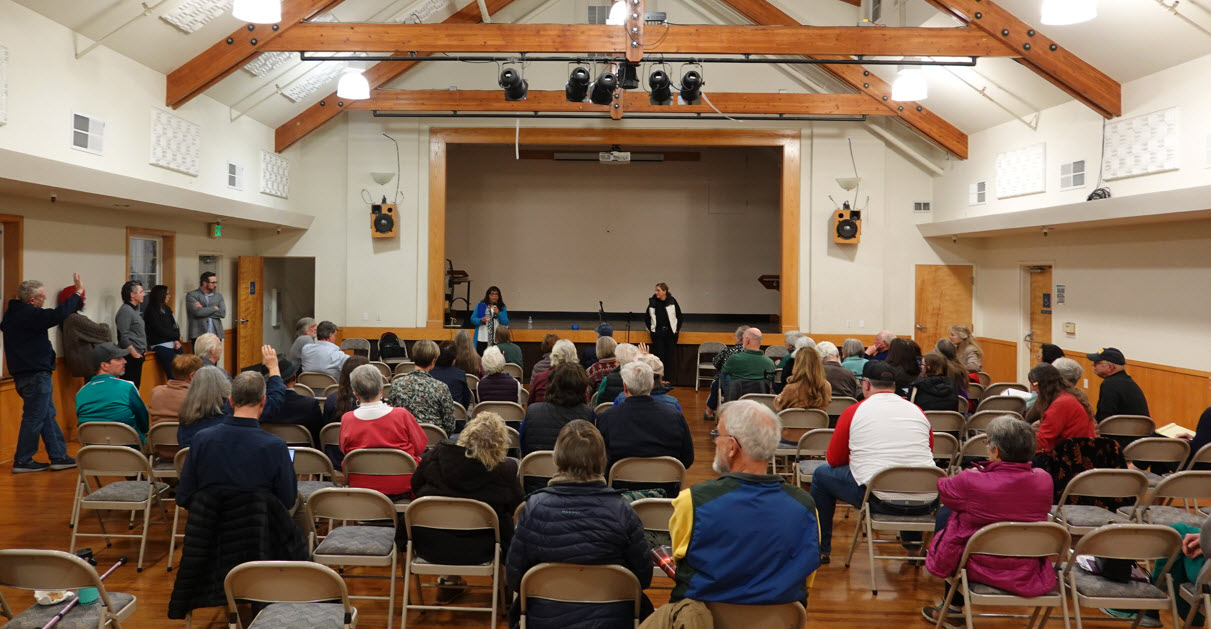
By Julie Horner
For many in the Santa Cruz Mountains and other rural regions in California, AT&T’s statewide Network Modernization Effort is a hard pill to swallow. In the neighborhood of 70 individuals attended a public forum hosted by the telecommunications giant at Felton Community Hall on Wednesday night, February 28. The meeting attempted to assuage outcry at the recent application AT&T has filed with the California Public Utilities Commission (CPUC) to withdraw its longstanding Carrier of Last Resort (COLR) copper-line (landline) telephone service obligation. A predominance of the residents attending the meeting hailed from Zayante, Lompico, and unincorporated Scotts Valley; many were from Boulder Creek, Ben Lomond, and there was a showing from Bonny Doon. For individuals who live deep in the mountains, AT&T landlines are lifelines and are literally the last resort in an emergency.
No One Left Behind
AT&T External Affairs Regional Director for the Central Coast, Dr. Bettye Saxon opened the evening by introducing her team, members who traveled from all over California to Felton to “face the music,” as 5th District Supervisor Bruce McPherson put it. McPherson spoke about the Board of Supervisors letter to the CPUC in opposition to AT&T’s request to withdraw its COLR obligation. McPherson said, “This is probably a two or three year process. We’ve made it very loud and clear in Santa Cruz County that we don’t want to leave people high and dry without landline service or to have some substitute so that people can be assured that they’ll have communications, whatever that might be.”
To frame the conversation, AT&T Vice President of External Affairs for California and Nevada, Tedi Vriheas began with an apology about one of two letters that AT&T customers received that described in dire terms how existing copper lines would be impacted. Vriheas indicated that landlines are not going away immediately. “We have applied for the Carrier of Last Resort to be lifted from AT&T so that we can no longer have to provide a basic telephone service to anybody in our service territory on a copper line. We’re going to stay in the telecommunications business, we’re just moving toward advanced services like all of our competitors.”
Citing the Telecommunications Act of 1996, which added Internet technology to existing broadcasting and telephony service regulated by the Federal Communications Commission (FCC), thus introducing robust competition and busting AT&T’s then monopoly on the industry, she said, “It’s not the same environment it was 27 years ago. There are over a hundred service providers in the state of California. AT&T used to serve 15 million customers on the copper network. Today there are less than 500 thousand. So this is coming to the end of its lifecycle. It’s kind of like analog television. It’s the same trajectory that technology takes; it eventually comes to the end of its lifecycle.”
Five Stages of Grief
First AT&T must be approved by the CPUC for withdrawal of service after securing a reliable alternative. Then they must go to the FCC to prove that customers are no longer being served through the Central Office. If AT&T can’t prove that there’s a reliable alternate communications provider, they must keep providing service in that area. Both fiber and fixed wireless from AT&T are on the table as possible replacement options; multiple targeted solutions from any number of small, medium, or large Internet Service Providers (ISPs) such as Comcast or Cruzio could bring additional broadband services in custom, site-specific applications.
“We have nothing,” one resident exclaimed. “If there’s no power at our house, there’s no wifi!” Another said, “My internet and my landline are on the same copper pair, and my internet goes down and my landline stays up. If I had to move to Voice over IP, I’d be screwed!” Vriheas said, if wireless doesn’t work at your house, no matter the provider, it’s not a reliable alternative, and therefore AT&T must remain the COLR at your house. Vriheas encouraged residents to consult the California Interactive Broadband Map (broadbandmap.ca.gov) to see if there’s an alternative telecommunications provider for your area. The problem, however, is that these maps are too general. Because of the Santa Cruz Mountains varied topography, neighbors within the same basic footprint on a regional map, sometimes those living right next door to each other, may experience very different levels of connectivity.
“There are so many people up here who don’t have an alternative,” one attendee said. “So many people who live in high fire zones, landslide areas…people’s lives have been saved from their landline. There are so many people up here who rely on their landlines.” She asked, “Why are you applying for this COLR relief now if we’re so many years away from a working alternative?” Vriheas’ response: “We don’t know how many years manufacturers will make parts for the copper network.” And what about installing more cell phone towers? Vriheas’ response: “Trying to build a cellphone tower in Santa Cruz County is tough. Way tough.” Not because of the physics of building the infrastructure but because some fear the effects of radiofrequency waves between received and transmitted cell phone signals. They don’t want a tower in their backyard.
The communities of the Santa Cruz Mountains are not alone. Vriheas said she has heard push-back from residents in rural areas across California who rely on AT&T landlines for communication and for emergency situations.
Moderators extended the meeting to allow everyone to be heard. In conclusion, Vriheas stated in a clear voice, “We are going to take this back to our leadership, to our lawyers, to the regulators, and we are going to ask them to consider taking those regions… taking those who are here, and carving them out of the withdrawal application. ”No promises can be made, she warned, but she said, “I will be your advocate.”
Send your questions, comments, and concerns to AT&T External Affairs Regional Director for the Central Coast, Dr. Bettye Saxon: bettye.saxon@att.com
Submit an online comment: apps.cpuc.ca.gov/c/A2303003
Send a letter to the CPUC Public Advisor’s Office, 505 Van Ness Ave., San Francisco, CA. 94102. (Notate the proceeding number: A.23-03-002)
Attend the next CPUC live webcast: March 19 at 2:00 & 6:00 PM | adminmonitor.com/ca/cpuc
Phone: 1-800-857-1917 | Passcode: 6032788#
***
Featured photo: AT&T External Affairs Regional Director for the Central Coast, Dr. Bettye Saxon (left), and AT&T Vice President of External Affairs for California and Nevada, Tedi Vriheas address Santa Cruz Mountains residents on Wednesday, February 28, 2024. Photo by Julie Horner.
Julie Horner writes about art, music, and the local business scene in the Santa Cruz Mountains.
Email: julie@slvpost.com
***
Have a news item to contribute? The San Lorenzo Valley Post welcomes your Santa Cruz Mountains news, story ideas, photos, and letters. Send us an email.
Sign up for our newsletter to stay connected to news and events in the Santa Cruz Mountains.




